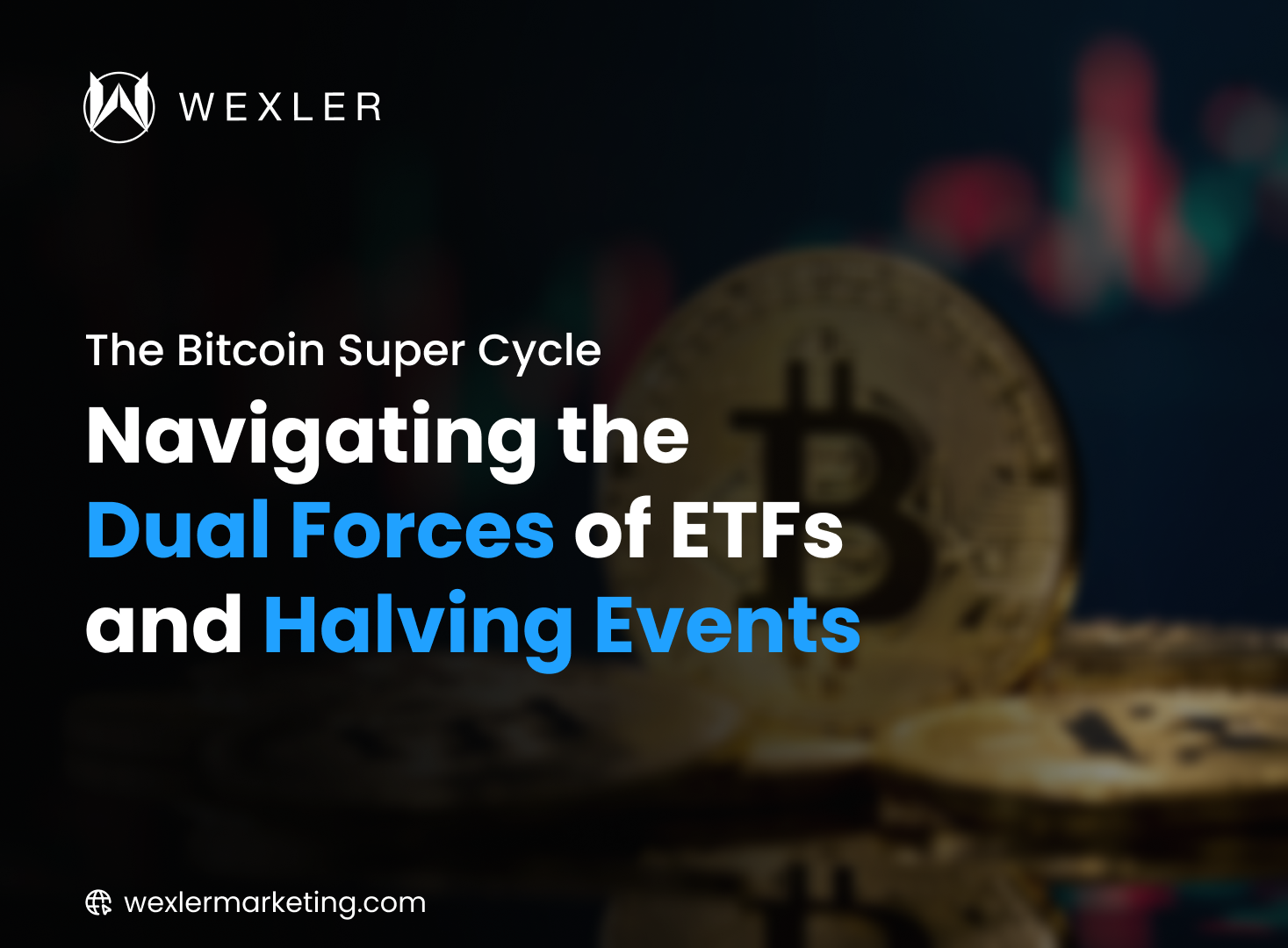As the cryptocurrency landscape continues to evolve, Bitcoin stands at the forefront of a monumental shift, potentially entering what many are calling a “super cycle.” This cycle is not solely driven by its intrinsic technological advancements or the cyclical halving events but is significantly bolstered by the advent of Bitcoin Exchange-Traded Funds (ETFs). This combination of factors is poised to create an unprecedented surge in Bitcoin’s value and market stability.
The ETF Catalyst
Bitcoin ETFs represent a groundbreaking development in the cryptocurrency world. They provide a regulated and easily accessible means for institutional and retail investors to gain exposure to Bitcoin without the complexities of managing cryptocurrency wallets or navigating exchanges. The introduction of ETFs has opened the floodgates to enormous buying pressure from investors who were previously sidelined due to regulatory concerns or technological barriers. This increased accessibility is akin to a “halving” event in itself, as it marks a reduction in barriers to entry, thereby amplifying demand and potentially the price of Bitcoin.
Understanding the Halving
Bitcoin’s halving events, occurring approximately every four years, are mechanisms embedded within its blockchain protocol to reduce the rewards for mining new blocks by half. These events effectively reduce the rate at which new bitcoins are created, constraining supply. Historically, halving events have preceded significant bull runs in the Bitcoin market, as the reduced supply against a backdrop of steady or increasing demand leads to price appreciation.
The Super Cycle Thesis
The conjunction of Bitcoin ETFs and the upcoming halving event presents a compelling case for what could be the most significant bull market in Bitcoin’s history. The ETFs serve as “Halving 1.0,” drastically increasing demand by making Bitcoin accessible to a broader investor base. The forthcoming halving, “Halving 2.0,” will further constrict supply, potentially doubling the upward pressure on Bitcoin’s price. This dual force could catalyze a super cycle unlike any seen before in the cryptocurrency space.
Backing by Numbers
Historical data underscore Bitcoin’s resilience and growth potential. In the past decade, Bitcoin has outperformed every other asset class, delivering exponential returns to its holders. Following each of its three previous halvings, Bitcoin has seen substantial price increases within the ensuing 12-18 months. The introduction of ETFs adds a new dimension to this pattern, potentially accelerating and magnifying the post-halving bull run.
Future Pricing Predictions
While predicting the exact future price of Bitcoin is challenging due to its inherent volatility and the myriad factors influencing the cryptocurrency market, the current indicators suggest a bullish outlook. Analysts and investors should closely monitor the interplay between ETF-induced demand and the supply squeeze from the upcoming halving to gauge the potential magnitude of the super cycle.
Questions for Consideration
How will the traditional financial markets react to a surge in Bitcoin ETFs, and what implications does this have for cryptocurrency adoption?
Can the increased demand from ETFs offset the potential sell-pressure from miners post-halving?
What role will regulatory developments play in shaping the trajectory of this super cycle?
Conclusion
The cryptocurrency market stands on the brink of a potentially historic super cycle, driven by the synergistic effects of Bitcoin ETFs and the forthcoming halving event. As we navigate this uncharted territory, the insights from recent studies and historical data provide a beacon for investors and enthusiasts alike. By understanding the forces at play, we can better prepare for the opportunities and challenges that lie ahead in the dynamic landscape of cryptocurrency.
Zeev Wexler
CEO, Wexler Marketing & Viacry
(Note: The data and predictions mentioned in this article are based on historical trends and current market analyses. Investors should conduct their own research and consider their financial situation before making investment decisions.)
